White Hat SEO Strategies Revealed 


How do you beat Google at its own game without breaking any rules?
Spammy, short-sighted tactics can leave you wiped from search engine rankings entirely.
Worst of all, it can take months and even YEARS to recover from these Google penalties.
What’s more, black hat tactics often create a poor experience for the user.
So what’s the answer?
White hat SEO.
White hat SEO strategies are what’s going to deliver the best ROI, the most reliable results, and the long-term gain you’ve been dreaming about. We’re talking about the sustainable growth you can bank on.
That’s why we wanted to create this comprehensive guide. All about how to use white hat SEO strategies to rank higher, attract more traffic and increase conversions.
First thing’s first, let’s dive into what makes white hat and black hat SEO so different.
White Hat SEO vs. Black Hat SEO
Search engine optimisation (SEO) is all about improving a website’s standing in the search engine results.
This kind of search engine visibility is about more than looking good.
In fact, 32% of search traffic is captured by the website ranked first on Google. The #1 organic result is also 10 times more likely to receive a click compared to a page in the #10 spot.
Here’s the key: how you go about SEO makes all the difference.
Some tactics are straight down the line, while others are a little shadier.
With that in mind, SEO tactics can be divided into two camps: white hat and black hat.
What is White Hat SEO?
White hat SEO refers to all the search engine optimisation tactics that fall in line with search engines’ terms of service.
In other words, you’re playing by the rules.
Google’s rules, that is.
Google is pretty clear about putting the user’s experience first. So, when you follow their rules, you are creating a user experience that works for humans and publishing content they want to read.
In short, you’re not only ranking higher in search engine results; you’re giving your target audience a valuable, useful experience – and that’s the secret to MORE conversions.
Since white hat SEO refers to any practice that improves your search rankings on a search engine results page (SERP), it often includes the following:
- Offering quality content and services
- Prioritising user experience (optimising for Core Web Vitals)
- Fast page loading times and mobile-friendliness
- Using descriptive, keyword-rich page titles and metadata
- Simple website navigation
- Authoritative inbound links
Why are White Hat SEO techniques important?
Failure to comply with White Hat SEO practices can get your site banned from Google or other search engines.
Understanding what’s what when it comes to SEO best practices is essential to maintain the integrity of your website, brand authority, online rankings, visibility, and more.
White hat SEO also offers several benefits to site owners:
1. Reduced cost
White hat SEO is cheaper than Black Hat SEO. Site owners don’t have to repair violations that have been identified and penalised by Google, such as spam links in blog comments or forums.
2. Site security
Sites optimised with white hat SEO are secure against Google Penalties.
3. Ranking consistency
Rankings achieved with white hat SEO are usually more stable and long-term compared to pages optimised with black hat practices.
What is Black Hat SEO?
Black hat SEO is pretty much the opposite of white hat SEO.
Think of it as the dark side of search engine marketing.
Black hat tactics include everything from keyword stuffing to sneaky redirects.
Obviously, any tactics considered to be deceitful or harmful to consumers also fall into the black hat category.
But here’s the thing:
Black hat SEO strategies do work. Most of the time, they will get you rankings. Yet as amazing the results may seem, they just won’t last.
Mainly because Google’s algorithms are constantly changing and catching up.
We’ve seen it again and again.
For example, Google’s famous Penguin update was triggered by link buying, low-quality links and keyword stuffing.
When Penguin was rolled out, a colossal number of websites watched their rankings plummet overnight.
This leads us to our next point – if you play the black hat game, expect to get penalties from the search engines.
Not sure if you’ve been penalised? Use tools like SEMrush:
(Image Source: HubSpot)
The more penalties you get, the more expensive and time-consuming it is to get your website clean and ranking again.
The bottom line?
Black hat SEO is not illegal, but because it violates webmaster guidelines set out by search engines, it is extremely risky business. If you want long-term growth, focus on white hat SEO.
Now we’re clear on what it is, let’s dive into the white hat SEO strategies every company should use.
White Hat SEO practices to implement today
1. Put user experience first.
There’s something you should know about Google: it wants you to put your users first. That’s one of the biggest missteps in SEO. Instead of writing content for computers, effective SEO creates for and connects with real humans.
Google is increasingly encouraging businesses to focus their attention on providing an exceptional user experience.
In fact, Google’s algorithms are designed to reward those websites that provide a SMOOTH and EASY UX.
That’s why SEO and UX are two disciplines so intertwined.
Without SEO, no traffic will come to your website.
Without a good user experience, your search engine rankings will suffer and your website may struggle to convert incoming traffic.
Of course, it’s not only Google who wants this – users want it too.
Did you know that 88% of users are unlikely to return to a website after just one bad experience? Trust is hard to earn and quickly lost.
Give users a great experience, and they’ll choose you over those websites that fail to deliver.
The result? More revenue.
In fact, companies with highly effective UX have increased their revenue by 37%.
So, what makes a great user experience?
In his Entrepreneur article, Gabriel Shaoolian explains:
“UX is the overall experience a visitor has on a website, in a program or in a mobile app. It’s not any single design element or layout that defines the experience – instead, it is a comprehensive compilation of many little interactions woven together, producing positive or negative feelings about the website and, by default, the parent company.”
Focus on these elements:
A. Make it easy to navigate.
Good website navigation makes it easy for search engines to crawl and for your visitors to find what they want quickly. The result? Greater search visibility and more conversion.
But ideally, you should work with a trusted web developer to make sure your website ticks all the right boxes.
B. Ensure your website is mobile-friendly
Google’s Mobilegeddon update in 2015 means preference is given to websites that are “responsive” in design.
In other words, Google boosts the ranking of mobile-friendly websites, which decreases the visibility of non-responsive websites.
Additionally, in 2018, Google announced “mobile-first” indexing, thus shifting its algorithms to use the mobile version of a website’s content to index its pages. You can use a tool like the “Mobile-Friendly Test” to make sure Google considers your site easy to use for mobile searchers.
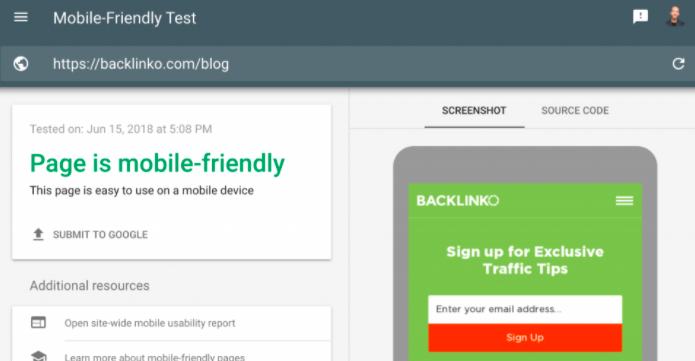
(Image Source: Backlinko)
More importantly, mobile users are 5X more likely to abandon a task if the website is not optimised for their device.
So if your website is not mobile-friendly, on the off-chance that your website is found, the chances of conversions are pretty slim.
C. Speed up your site
The speed and performance of your website (and mobile site) is a ranking for Google. But also, your page’s loading speed directly affects the UX of your site.
Think about it – how long will you wait for a page to load?
Here are some stats you should know:
The BBC lost an additional 10% of visitors for every additional second its site took to load.
AND
DoubleClick by Google found over half of mobile site visits were abandoned if a page took more than 3 seconds to load.
Test the speed of your desktop and mobile websites using the free Google PageSpeed Insights tool:
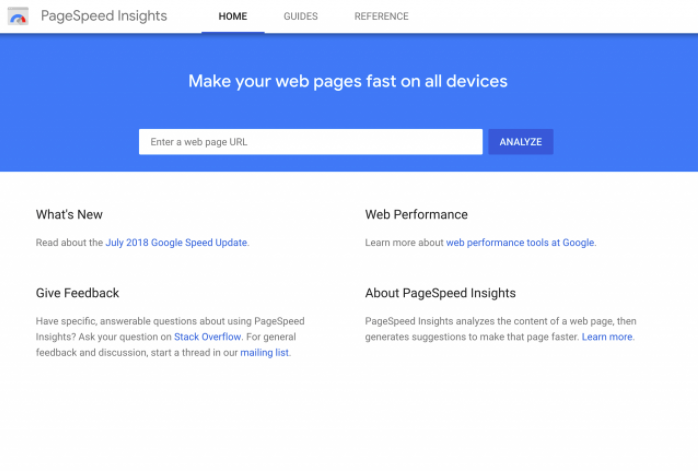
REMEMBER: Black hats aren’t prioritising UX. They’re too busy churning out heaps of websites with the hopes of ranking high.
This usually results in some pretty ugly sites that have obviously been created for search engines, not humans. You know the type we mean.
Create ONE website and invest in creating an incomparable user experience.
2. Keyword research.
Keyword research is the foundation of search engine optimisation.
Keywords are one of the pillars of search engine optimisation. They’re the themes, ideas and topics that your site’s content is based upon.
Once upon a time, SEO was all about finding some keywords and stuffing them into your pages.
But Google is now smarter than that. It now understands language nuances like stemming, synonyms, and answers.
That means your white hat SEO needs to be smarter too.
Here’s how:
First, use keyword research to inform great content.
Your keyword research tells you what users are looking for. So, use this to select the topics and content pillars for how-to articles, videos, long-form content, etc.
Then, make sure your keyword is included in key elements of the web page:
- Article headline, page title and meta tags.
- URL slug – this is what shows up in search results and attracts users.
- First paragraph of the article – this engages readers and tells them straight up that your article will focus on their search term.
- Article subheadings – Keep the readers’ attention as they’re scrolling with subheadings that give clarity and, where appropriate, use short and long-tail keywords.
3. Create content that’s unique and valuable.
Stealing content or creating low quality, spammy content is as bad as it gets for black hat SEO.
You might not know whether you’re breaking the rules, so let’s lay this out really clearly:
- DON’T republish existing posts without attribution.
- DON’T rewrite content that already exists.
Not only is stealing content unethical, but Google also doesn’t like duplicate content.
Why? Because it doesn’t help your human readers who want something unique, educational, trustworthy.
So, in most cases, stealing content won’t even help your rankings.
In fact, this is what Google’s Panda update was made to target.
You’re better off creating truly unique, useful content, all as part of a comprehensive content marketing strategy.
When you do, don’t pay peanuts for poor content that crams in keywords.
Your users will not thank you for it.
Remember, Google rewards websites with good “engagement signals”.
Of all the engagement signals, Google pays VERY close attention to how long people stay on your page.
If Google notices that people are leaving just moments after they got there, your rankings will drop.
It doesn’t matter how many keywords are stuffed in your content.
The answer?
Invest in a content strategy that focuses on crafting engaging content guaranteed to draw in readers and keep them coming back for more.
If you don’t have the resources to do it, pay some experienced content writers to help.
As part of your strategy, make sure you are generating long-form content.
A 2020 study of search engine ranking factors found a strong link between in-depth content and rankings:
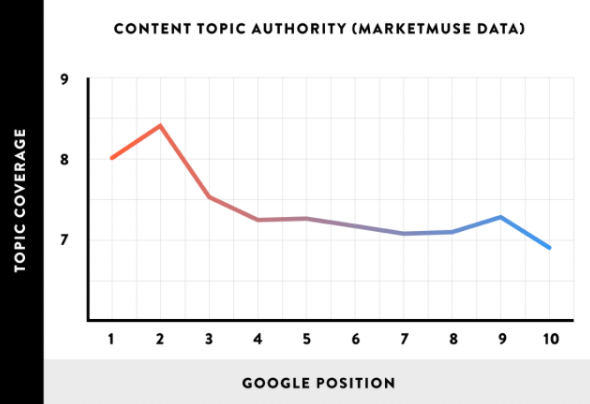
(Image Source: Backlinko)
What does this mean?
Content that ranks well covers an entire topic on one page.
For example, if you sell office furniture, you might create a massive 5,000-word guide to choosing the right desk. It would cover ergonomics, trends in office design, and all the other factors that influence purchasing decisions.
Because the guide shows you EVERYTHING you need to know about office furniture, it would probably rank much higher than the competition in Google.
But most important, readers would find it valuable and useful, which means they are more likely to return to you later in their buying journey.
Let’s talk more about useful content – how important is it really?
Google has an AI technology called Google RankBrain which lets it measure whether or not searchers are satisfied with a particular set of search results.
If your content gives searchers what they want, Google will rank you higher.
Unique and useful content is a massive part of white hat SEO – you cannot afford NOT to do it right.
4. Link building.
We’ve talked before about how important link building is to search engine optimisation.
The strength of your link building strategy is by far the biggest factor in Google’s decision-making process.
Even fresh content comes in second to your link building.
Check out the top ranking pages for your keyword and you can bet they all have a good number of quality backlinks.
That’s how Google works.
The problem is, building links isn’t a fast or easy task. It takes TIME.
So what’s the alternative? Buying links.
Sure, buying links is a quick and easy way to get a bunch of high-quality links from sites that will boost your site.
BUT this black hat tactic can attract a severe penalty you get found out.
Here’s what Google says:
“Buying or selling links that pass PageRank can dilute the quality of search results. Participating in link schemes violates Google’s Webmaster Guidelines and can negatively impact a site’s ranking in search results.”
You got it – buying links VIOLATES Google’s guidelines.
Challenging though it might be, you need to build links. Focus on:
A. Quality.
First, think quality over quantity.
Google looks for signals to show that your backlinks have been earned.
Focus on earning backlinks to authoritative sites that people trust and respect.
If one high authority site like Forbes links to you, that’s way more effective than getting links from heaps of non-authoritative sites.
B. Relevancy.
Aim for backlinks that are related to your site. For example, if you are selling BBQs, it makes sense to have a brand like Bunnings linking to you.
C. Natural growth.
How many backlinks are you getting over time? If Google sees that you get lots of backlinks in one hit and then nothing, it probably means you’ve been paying for them.
How do you get white hat backlinks? Follow these proven white hat SEO methods:
A. Do round-up posts
Invite experts in your space to be included in round-up posts on a particular topic.
Write an amazing blog post, including their name and social media profile link. Then, email them a link to the article and ask them to share the post on their social networks and website.
This will earn more shares, leading to your post being noticed and linked to by high authority sites.
B. Broken link-building
Find broken links on other high authority websites and offer the site owner your link as a replacement link.
You can check for broken links using Check My Links and Ahrefs Site Explorer.
Because you’re adding value to their site, people should be happy to link to you.
C. Become a source for reporters and bloggers
Use a match-making site like SourceBottle or Haro. These services connect bloggers and journalists to experts and brands who want to build their profile in news sites and blogs.
This white hat SEO strategy takes patience and some hard work, but it’s the best way to create high-quality backlinks at scale.
5. On-page SEO
The final white hat tactic you need to know is on-page SEO. Okay, technically this is more than one strategy. It’s a catch-all for all those tweaks and adjustments you need to do to each page to rank higher.
The best part is these simple and sustainable actions can create big change.
As a starting point, we’ve narrowed down 5 crucial on-page elements to focus on.
A. Create descriptive URLs.
Google uses your page’s URL to understand what your content is about:
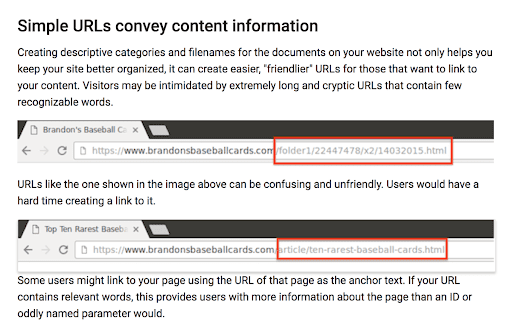
So, make your URLs both short and keyword-rich.
That way Google knows exactly what the page is about and how to index it.
B. Build a smart site architecture with internal links.
Internal linking is one of those tactics that people don’t think is very important – but it is!
First, every internal link on the page helps Google understand your content and site architecture better.
Second, internal links send link authority to those pages that you want to rank better.
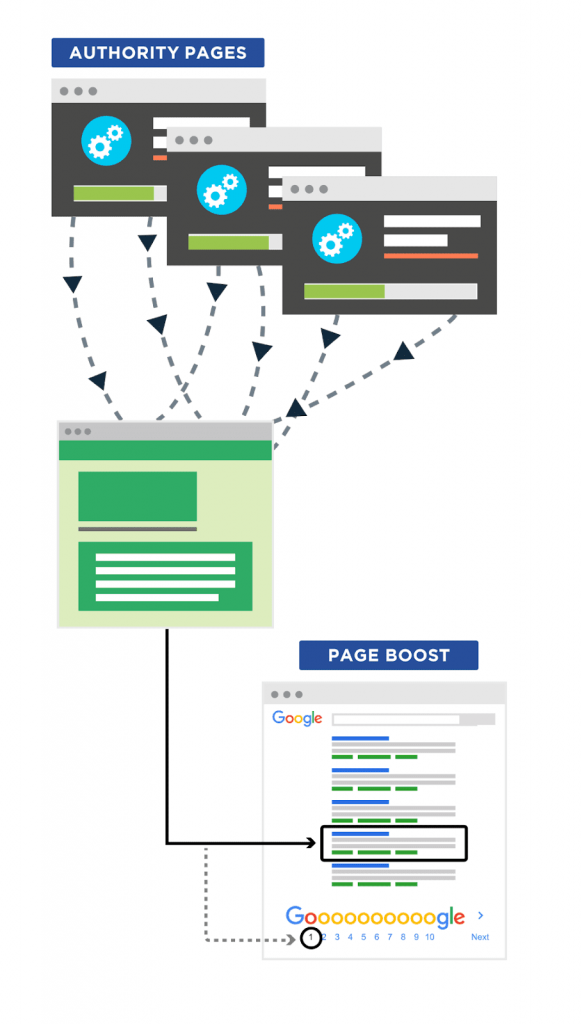
(Image Source: Backlinko)
Try to keep your site architecture “flat.” That way, it only takes 3-4 clicks to go from one page to any other page on your site. This helps link authority “flow” from one page to another, thus improving pages’ search rankings.

(Image Source: Backlinko)
C. Use keywords strategically
We’ve already talked about keywords and how important they are to your white hat SEO.
Remember when you used to be able to rank your page using keyword stuffing?
You know, cramming keywords into your content as much as possible – even in places it didn’t make sense?
That’s a black hat technique, and unfortunately, many people still use it.
Search engines have moved on, and keyword stuffing doesn’t work anymore.
Instead, you need to use your target keyword and variations in strategic places that will show Google what the page is about:
- In your title tag
- In H1 or H2 tag
- At the start of your content (intro)
D. Optimise images.
We know, search engines can’t see your images. So how can you optimise them?
Use alt tags.
Search engines use alt tags to find out what your images are about so they can index them.
The more descriptive your alt tags, the better understanding Google will get.
E. Use descriptive, keyword-rich meta tags.
Follow best practices when creating meta descriptions for each page on your website to help search engines and users discover your content.
F. Fix errors with tools like Google Search Console.
Use Google Search Console to find errors and problems with your site’s technical SEO.
Head over to the “Index Coverage Report” to see if Google has trouble finding your important pages:
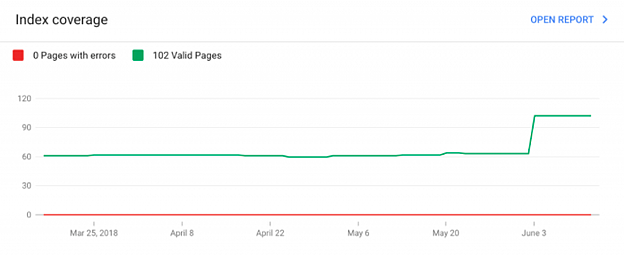
Over to you
White hat SEO comes down to one critical thing: Think like Google.
Google’s goal is to put users first and provide genuinely useful content.
So that’s what you need to do.
- Provide an exceptional user experience
- Offer useful, unique content
- Build high-quality links
You’re shooting for outstanding results that don’t just last a couple of weeks – you want revenue-smashing results that give over and over again.
For that, you need to approach things with a long-term timeframe. Don’t be tempted by the short-term wins offered by black-hat tactics. Don’t put your website and business at risk.
Invest in white hat SEO for long-term success.
Ready to delve deeper into white hat SEO and create your revenue-busting strategy? Get your free SEO Audit and 6-month game plan to increase traffic and skyrocket your rankings!









